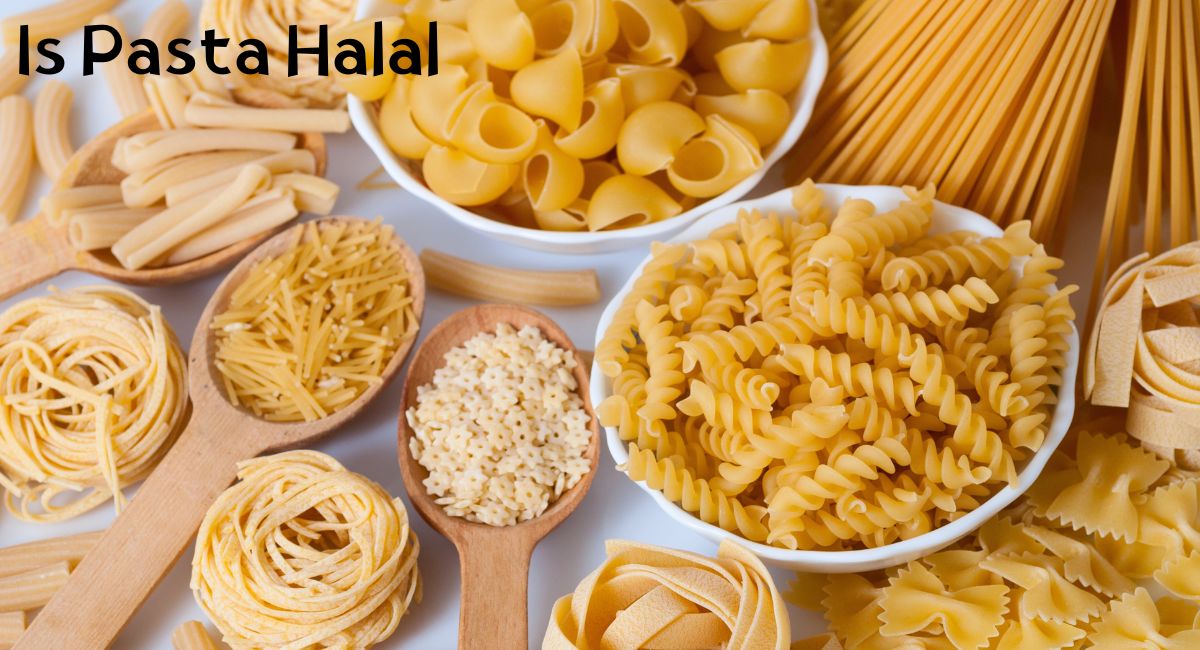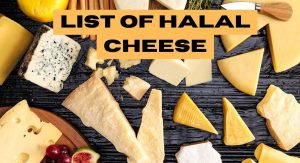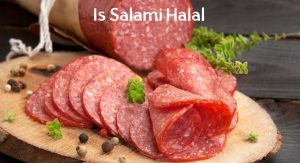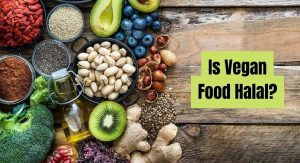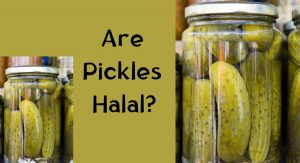Pasta, a beloved staple in kitchens around the world, is renowned for its versatility and ability to serve as a canvas for an array of delightful flavors. But for individuals who adhere to halal dietary principles, the question of whether pasta is permissible can be a matter of concern.
Understanding whether pasta aligns with halal dietary principles involves examining its ingredients, production processes, and potential sources of contamination.
In this article, we delve into the intricacies of pasta, exploring what makes it halal, the factors to consider when selecting pasta products, and how to ensure that this beloved carbohydrate can be enjoyed while adhering to halal dietary requirements.
Is Pasta Halal
Pasta, a staple in Italian cuisine, has become a global favorite, enjoyed by people from different cultures and religions. One question that often arises among Muslim consumers is whether pasta is halal. Let’s delve further into the topic to provide a clear understanding.
Basic Ingredients of Pasta
At its core, pasta is made from two primary ingredients:
- Wheat Flour: This is the main ingredient in most pasta. Wheat flour itself is naturally halal.
- Water: Another halal ingredient.
Given this, plain pasta made from just these two ingredients is halal.
Factors That Can Affect the Halal Status of Pasta
- Additives and Enrichments: Some pasta brands add vitamins and minerals to enrich their products. While most of these enrichments are halal, there’s a possibility that some might be derived from non-halal sources. It’s essential to check the source of these additives.
- Egg Pasta: Some types of pasta, like certain fresh pasta or egg noodles, contain eggs. If the eggs are from chickens that were not slaughtered according to Islamic law, some might consider the pasta non-halal.
- Cross-contamination: If the pasta is produced in a facility that also processes non-halal foods, there’s a risk of cross-contamination. While the pasta itself might be halal, the environment might make it non-halal for stricter observers.
- Meat Fillings: Some pasta dishes, like ravioli or tortellini, come with fillings that might contain meat. The halal status of these dishes depends on whether the meat used is halal.
- Alcohol in Sauces: While pasta itself might be halal, the sauces or dishes it’s served with might contain alcohol or non-halal ingredients. For instance, some pasta sauces might have wine or spirits as ingredients.
How to Ensure Your Pasta is Halal
- Check Labels: Many brands now indicate whether their products are halal. Look for a halal certification on the packaging.
- Research the Brand: Some companies provide detailed information about their products and manufacturing processes on their websites.
- Opt for Plain Pasta: If in doubt, stick to plain pasta made from just wheat and water.
- Make Homemade Pasta: This way, you have control over the ingredients used.
- Ask at Restaurants: If dining out, don’t hesitate to ask the staff about the ingredients used in their pasta and sauces.
In essence, pasta in its basic form is halal. However, external factors like additives, the inclusion of eggs, or the environment in which it’s produced can affect its halal status. As with any food product, it’s always best to check the ingredients, research the brand, and when in doubt, ask. By being informed, you can enjoy your pasta while adhering to your religious beliefs.
According to Halalharam.org, here’s a list of halal pasta
| Brand | Product Name | Status |
|---|---|---|
| American Italian Pasta | Cut Macaroni | Halal |
| American Italian Pasta | Egg Fettuccine | Halal |
| American Italian Pasta | Egg Noodles | Halal |
| American Italian Pasta | Fettuccine | Halal |
| American Italian Pasta | Fusilli | Halal |
| American Italian Pasta | Gemilli | Halal |
| American Italian Pasta | Lasagne Ricce LisceLinguine | Halal |
| American Italian Pasta | Macaroni | Halal |
| American Italian Pasta | Malfalda | Halal |
| American Italian Pasta | Manicotti | Halal |
| American Italian Pasta | Rigatoni | Halal |
| American Italian Pasta | Rotini | Halal |
| American Italian Pasta | Soup Pasta | Halal |
| American Italian Pasta | Spaghetti | Halal |
| Anthony’s | FETTUCCINE (Pasta) | Halal |
| Archer Farms | FETTUCCINE (Pasta) | Halal |
| Assoluti | FETTUCCINE (Pasta) | Halal |
| Bi-Lo | FETTUCCINE (Pasta) | Halal |
| Classic Market Classics | FETTUCCINE (Pasta) | Halal |
| Cortona Brand | FETTUCCINE (Pasta) | Halal |
| Creamette | Pasta Nuggets | Halal |
| Culinary Circle | FETTUCCINE (Pasta) | Halal |
| Deboles | Spinach Pasta Products | Halal |
| Don Peppe | Pasta Mista | Halal |
| Essential Everyday | FETTUCCINE (Pasta) | Halal |
| Fresh & Easy | FETTUCCINE (Pasta) | Halal |
| Giant | FETTUCCINE (Pasta) | Halal |
| Globe | Pasta Nuggets | Halal |
| Greenfield | Roiled Pasta | Halal |
| H-E-B | FETTUCCINE (Pasta) | Halal |
| Hannaford | FETTUCCINE (Pasta) | Halal |
| Harris Teeter | FETTUCCINE (Pasta) | Halal |
| Italpasta | Alphabets | Halal |
| Italpasta | Baby Shells | Halal |
| Italpasta | Bucatini | Halal |
| Italpasta | Capellini | Halal |
| Italpasta | Ditali | Halal |
| Italpasta | Egg Fettuccine | Halal |
| Italpasta | Egg Noodles-Broad | Halal |
| Italpasta | Egg Noodles-Extra Broad | Halal |
| Italpasta | Egg Noodles-Fine | Halal |
| Italpasta | Egg Noodles-Medium | Halal |
| Italpasta | Elbows | Halal |
| Italpasta | Fettuccine | Halal |
| Italpasta | Fusilli | Halal |
| Italpasta | Gnocchi | Halal |
| Italpasta | Jumbo Shells | Halal |
| Italpasta | Large Shells | Halal |
| Italpasta | Lasagne | Halal |
| Italpasta | Lasagne Oven Ready | Halal |
| Italpasta | Lasagnette | Halal |
| Italpasta | Linguine | Halal |
| Italpasta | Linguine Fine | Halal |
| Italpasta | Macaroncelli | Halal |
| Italpasta | Malfalda | Halal |
| Italpasta | Manicotti | Halal |
| Italpasta | Mezzani Cut | Halal |
| Italpasta | Mezzi Rigatoni | Halal |
| Italpasta | Orzo | Halal |
| Italpasta | Penne Lisce | Halal |
| Italpasta | Pennine Lisce | Halal |
| Italpasta | Pennine Rigate | Halal |
| Italpasta | Plain Noodles-Broad | Halal |
| Italpasta | Plain Noodles-Extra Broad | Halal |
| Italpasta | Plain Noodles-Fine | Halal |
| Kroger | Pasta Spaghetti | Halal |
| La Romanella | FETTUCCINE (Pasta) | Halal |
| Laura Lynn | FETTUCCINE (Pasta) | Halal |
| Lensi | FETTUCCINE (Pasta) | Halal |
| Lowes | FETTUCCINE (Pasta) | Halal |
| Luxury | FETTUCCINE (Pasta) | Halal |
| Market Basket | FETTUCCINE (Pasta) | Halal |
| Market Pantry | FETTUCCINE (Pasta) | Halal |
| Meijer | FETTUCCINE (Pasta) | Halal |
| Montalcino | FETTUCCINE (Pasta) | Halal |
| Mueller’s | FETTUCCINE (Pasta) | Halal |
| Nob Hill Trading Co. | FETTUCCINE (Pasta) | Halal |
| Pasta Della Vita | ELBOW MACARONI | Halal |
| Pasta Della Vita | FETTUCCINE (Pasta) | Halal |
| Pasta Della Vita | SPAGHETTI | Halal |
| Pasta La Bella | FETTUCCINE (Pasta) | Halal |
| Pasta Labella | Capelli D’Angel0 | Halal |
| Pasta Labella | Egg Noodles Medium | Halal |
| Pasta Labella | Egg Noodles Wide | Halal |
| Pasta Labella | Elbow Macaroni | Halal |
| Pasta Labella | Farfalle | Halal |
| Pasta Labella | Fettuccine | Halal |
| Pasta Labella | Fettuccine Spinach | Halal |
| Pasta Labella | Fettuccine Tomato Basil | Halal |
| Pasta Labella | Fusilli Grandi | Halal |
| Pasta Labella | Fusilli Medi/Rotini | Halal |
| Pasta Labella | Linguine | Halal |
| Pasta Labella | Linguine Chili Pepper | Halal |
| Pasta Labella | Linguine Lemon Pepper | Halal |
| Pasta Labella | Spaghetti | Halal |
| Pasta Labella | Spaghettini | Halal |
| Pasta Labella | Stars | Halal |
| Pasta Labella | Ziti Cut | Halal |
| Pasta Lensi | FETTUCCINE (Pasta) | Halal |
| Pasta Romano | Spaghetti | Halal |
| Pasta Sanita | Angel Hair | Halal |
| Pasta Sanita | Ditalini | Halal |
| Pasta Sanita | ELBOW MACARONI | Halal |
| Pasta Sanita | Elbow Macaroni | Halal |
| Pasta Sanita | Extra Wide Egg Noodles | Halal |
| Pasta Sanita | Fettuccine | Halal |
| Pasta Sanita | Linguine | Halal |
| Pasta Sanita | Medium Egg Noodles | Halal |
| Pasta Sanita | Medium Shells | Halal |
| Pasta Sanita | Penne | Halal |
| Pasta Sanita | Penne Rigate | Halal |
| Pasta Sanita | Rigatoni | Halal |
| Pasta Sanita | Rotini | Halal |
| Pasta Sanita | Rotini Primavera | Halal |
| Pasta Sanita | Spaghetti | Halal |
| Pasta Sanita | Thin Spaghetti | Halal |
| Pasta Sanita | Vermecelli | Halal |
| Pasta Sanita | Wide Egg Noodles | Halal |
| Pasta Sanita | Ziti | Halal |
| Pathmark | FETTUCCINE (Pasta) | Halal |
| Price Chopper | FETTUCCINE (Pasta) | Halal |
| Prince | Pasta Nuggets | Halal |
| Publix | FETTUCCINE (Pasta) | Halal |
| R & F | FETTUCCINE (Pasta) | Halal |
| Raley’s | FETTUCCINE (Pasta) | Halal |
| Reggano | FETTUCCINE (Pasta) | Halal |
| Rosta D’ Italia | Pasta Products | Halal |
| Shur Fine | FETTUCCINE (Pasta) | Halal |
| Smart & Final Chef’s | FETTUCCINE (Pasta) | Halal |
| Southern Home | FETTUCCINE (Pasta) | Halal |
| Spartan | FETTUCCINE (Pasta) | Halal |
| Sun Harvest | FETTUCCINE (Pasta) | Halal |
| Sysco Arrezzio | FETTUCCINE (Pasta) | Halal |
| Sysco Pasta La Bella | SPAGHETTI | Halal |
| Sysco Pasta La Bella | SPAGHETTINI | Halal |
| Vimco | Pasta Nuggets | Halal |
| Wegmans | FETTUCCINE (Pasta) | Halal |
| Weis Quality | FETTUCCINE (Pasta) | Halal |
| World Classics | FETTUCCINE (Pasta) | Halal |
| World Table | FETTUCCINE (Pasta) | Halal |
Is Vodka Pasta Halal
Vodka pasta, also known as penne alla vodka, is a popular Italian-American dish that combines pasta, tomato sauce, cream, and vodka to create a rich and flavorful meal. But for many Muslims, the question arises: Is vodka pasta halal? To answer this, we need to delve into the ingredients, the cooking process, and the principles of Islamic dietary laws.
The Role of Vodka in Vodka Pasta
Vodka is used in the dish to enhance the flavor of the tomato sauce and to impart a distinct taste. Some believe that the alcohol in the vodka helps release flavors from the tomatoes that are not soluble in water. However, the key question is whether the alcohol cooks off during the preparation.
Cooking Off Alcohol
It’s a common belief that alcohol completely evaporates when cooked, leaving only the flavor without the alcohol content. However, this is a misconception. While cooking does reduce the amount of alcohol in food, it doesn’t always eliminate it entirely. The amount of alcohol that remains can vary based on several factors, including cooking time, method, and temperature. In a dish like vodka pasta, where the sauce is typically simmered for a short time, a significant percentage of the alcohol may remain.
Alternative Ingredients
For those who wish to enjoy the flavor of vodka pasta without the alcohol, there are halal-friendly alternatives available. Non-alcoholic vodka or simply increasing the acidity of the sauce with ingredients like lemon juice or vinegar can mimic the effect of traditional vodka.
Personal Interpretations
Islamic scholars have different opinions on the matter. Some believe that if the alcohol has been completely cooked off and the dish doesn’t intoxicate, then it’s permissible. Others hold a stricter view, believing that the mere presence of an alcoholic ingredient, even if cooked off, renders the dish haram.
In conclusion, whether vodka pasta is halal or not largely depends on individual beliefs and interpretations of Islamic dietary laws. Those concerned should consult with knowledgeable Islamic scholars or religious authorities. Alternatively, opting for a version of the dish that uses halal-friendly substitutes for vodka can be a safe and delicious choice.
Is Barilla Pasta Halal
According to the brand website, some pastas offered by the brand are vegetarian. Vegetarian products are made without any animal-derived ingredients. This means no meat, fish, poultry, and in some strict interpretations, no by-products such as gelatin (which is derived from animal bones) or rennet (often sourced from animal stomachs).
However, halal isn’t just about ingredients. It’s also about processes and the chances of cross contamination with haram ingredients. Halal certification ensures that not only are the ingredients in a product halal, but also that the production, handling, and even packaging processes adhere to Islamic dietary laws.
But, Barilla is not a halal certified brand. Therefore, for those who strictly adhere to halal dietary laws, this lack of certification might be a concern. For others who are primarily looking to avoid non-halal ingredients, the vegetarian nature of Barilla pasta could be sufficient.
What is Pasta
Pasta is a type of Italian food typically made from an unleavened dough of wheat flour mixed with water or eggs, and formed into sheets or various shapes, then cooked by boiling or baking. It can be made with flour from other cereals or grains, and eggs may be used instead of water. Pastas may be divided into two broad categories, dried (pasta secca) and fresh (pasta fresca).
The first reference to pasta dishes can be traced back to ancient Rome. However, it was during the middle ages that pasta became immensely popular. The ideal climate of Italy proved beneficial for drying pasta, leading to its widespread consumption.
There are many theories about the origin of pasta. Some researchers say that it was brought to Italy by Marco Polo via China. Others suggest pasta was introduced in the south of Italy by the Arabs. In the late 19th century, Italians immigrants popularized pasta worldwide.
In its various forms, pasta has become a staple food of numerous global cuisines. It is easy to cook, versatile in dishes it can be used in and gives a lot of room for innovation and experimentation.
Types of Pasta
There are numerous types of pasta available, each with its own unique shape and texture. Pasta comes in various forms, and different types are often used in specific dishes to enhance the overall eating experience. Here are some common types of pasta:
- Spaghetti: Long, thin, cylindrical pasta. It’s a classic choice for dishes like spaghetti with marinara sauce or carbonara.
- Fettuccine: A flat, wide pasta, wider than linguine but narrower than pappardelle. It’s commonly used in Alfredo sauce dishes.
- Linguine: Similar to spaghetti but flat and wider. It’s often paired with seafood or pesto sauces.
- Penne: Short, tube-shaped pasta with diagonally cut ends. Penne is versatile and works well with various sauces, including marinara and creamy sauces.
- Rigatoni: Large, ridged tubes of pasta that hold sauces well. They’re often used in baked pasta dishes.
- Farfalle: Also known as bowtie pasta, farfalle is shaped like little butterflies or bowties. It’s often used in pasta salads.
- Rotini: Spiral-shaped pasta that holds sauces and ingredients well. It’s great in pasta salads and casseroles.
- Macaroni: Small, curved tubes of pasta that are commonly used in macaroni and cheese dishes.
- Orzo: Tiny rice-shaped pasta often used in soups, salads, and pilafs.
- Lasagna: Large, flat sheets of pasta used to make the popular Italian dish, lasagna. It’s layered with sauce, cheese, and other ingredients.
- Cavatelli: Small, shell-shaped pasta that pairs well with chunky sauces.
- Angel Hair: Very thin, delicate pasta often used with light sauces, such as garlic and olive oil.
- Ravioli: Square or round pasta pockets filled with various fillings, such as cheese, meat, or vegetables. They’re typically served with a sauce.
- Tortellini: Ring-shaped pasta that is usually filled with cheese, meat, or vegetables. It’s commonly used in soups and pasta salads.
- Pappardelle: Very wide, flat pasta that pairs well with rich, hearty sauces.
- Cannelloni: Large pasta tubes that are typically stuffed and baked in a sauce.
- Tagliatelle: Long, flat ribbons of pasta, similar to fettuccine, often served with creamy sauces or ragù.
- Gnocchi: Small dumplings made from potatoes or semolina flour. They are soft and doughy in texture.
- Orecchiette: Small, ear-shaped pasta often used in dishes from southern Italy.
- Conchiglie: Shaped like seashells, this pasta is great for holding chunky sauces and is often used in baked dishes.
These are just a few examples, and there are many more pasta shapes and varieties from different regions of Italy and around the world. The choice of pasta can significantly affect the overall taste and texture of a dish, so experimenting with different types can be a fun culinary adventure.
How is Pasta Made
Pasta is made using a relatively simple process that involves a few basic ingredients: durum wheat semolina flour and water (sometimes eggs). The exact method can vary depending on the type of pasta being produced, but here is a general overview of how pasta is made:
- Ingredient Mixing: Durum wheat semolina flour is typically used for making pasta because it has a high protein content and is well-suited for pasta production. In some cases, eggs may be added for flavor and to create an egg pasta.
- Kneading: The semolina flour (and eggs if used) is mixed with water to form a dough. The dough is kneaded thoroughly to develop gluten, which gives pasta its structure and chewiness. The kneading process can be done by machine or by hand.
- Resting: The pasta dough is allowed to rest for a period of time, usually around 30 minutes to 1 hour. This allows the gluten to relax and makes the dough easier to work with.
- Rolling: The rested dough is rolled out to the desired thickness. The thickness can vary depending on the type of pasta being made. For example, for thin pasta like fettuccine or tagliatelle, the dough is rolled out very thin, while for thicker pasta like pappardelle or lasagna sheets, it’s rolled out thicker.
- Cutting and Shaping: The rolled-out dough is cut and shaped into the desired pasta shape. This can be done using various tools and machines designed for specific pasta shapes. For instance, a pasta machine can be used to cut sheets into strips for tagliatelle or fettuccine, or a ravioli mold can be used to shape and fill ravioli.
- Drying: The freshly shaped pasta is allowed to dry. This can be done by hanging it on drying racks or laying it out on trays. Drying times can vary depending on the type of pasta and desired texture.
- Packaging: Once the pasta is completely dried, it is packaged for sale and distribution. Dried pasta is often sold in various shapes and sizes in boxes or bags.
It’s worth noting that fresh pasta, which is not dried, is also made using a similar process but without the drying step. Fresh pasta has a shorter shelf life and is typically refrigerated or frozen for storage.
Commercial pasta production involves large-scale machinery and automated processes, while homemade pasta is often made by hand or with the help of small pasta machines. Regardless of the scale, making pasta can be a rewarding culinary endeavor, allowing for a wide range of creativity in terms of shapes, flavors, and fillings.
Ways to Cook Pasta
There are many ways to cook pasta, and the method you choose often depends on the type of pasta you’re using and your personal preferences. Here are some common methods for cooking pasta:
- Boiling: Bring a large pot of water to a rolling boil. Use about 4-6 quarts of water for every pound of pasta. Add a generous amount of salt (about 1-2 tablespoons per gallon of water) to the boiling water. This helps season the pasta as it cooks. Add the pasta to the boiling water and stir immediately to prevent sticking. Cook the pasta according to the package instructions or until it reaches your desired level of doneness. Taste test it to ensure it’s cooked to your liking. Drain the pasta in a colander, and it’s ready to be served with your favorite sauce or toppings.
- Al Dente: To achieve “al dente” pasta, cook it until it’s firm to the bite. This typically means cooking it for a minute or two less than the package instructions suggest. Taste test to determine the perfect texture.
- Stirring and Preventing Sticking: Stir the pasta occasionally while it’s cooking to prevent it from sticking together. Adding a small amount of oil to the boiling water can also help prevent sticking, although it’s not always necessary.
- Fresh Pasta: Fresh pasta cooks much faster than dried pasta. It usually only takes a few minutes to cook fresh pasta, so be vigilant to avoid overcooking it.
- Cold Water Start (for baked dishes like lasagna): Some recipes, like lasagna, call for no-boil noodles or using a cold water start. In this case, layer the uncooked noodles directly into your dish, and they will cook as the dish bakes.
- Pan-Frying or Sautéing: After boiling pasta, you can also sauté it in a pan with some olive oil or butter. This creates a crispy texture and can be the basis for many pasta dishes, such as pasta primavera.
- Baking: Baked pasta dishes like baked ziti or macaroni and cheese involve cooking the pasta, mixing it with sauce and cheese, and then baking it in the oven until it’s bubbly and golden brown.
- Microwaving (not recommended for all pasta types): You can cook pasta in the microwave by placing it in a microwave-safe bowl, covering it with water, and microwaving it in short intervals, stirring in between, until it’s cooked to your liking.
Remember to match the cooking method to the type of pasta and dish you’re preparing, and always follow package instructions for specific pasta types, as cooking times can vary. Additionally, pasta can be paired with a wide variety of sauces, vegetables, proteins, and seasonings to create countless delicious dishes.
Uses of Pasta
Pasta is an incredibly versatile food that can be used in a wide variety of dishes. Here are some common and creative uses for pasta:
- Spaghetti and Meatballs: Classic Italian-American dish featuring spaghetti served with tomato sauce and meatballs.
- Fettuccine Alfredo: A creamy sauce made with butter, heavy cream, and Parmesan cheese served over fettuccine pasta.
- Lasagna: Layered pasta dish with sheets of lasagna noodles, ricotta cheese, meat sauce, and mozzarella, typically baked until bubbly.
- Pasta Salad: A cold salad made with cooked pasta, vegetables, and a vinaigrette or mayonnaise-based dressing. It can be customized with various ingredients like tomatoes, cucumbers, olives, and more.
- Macaroni and Cheese: A beloved comfort food made with elbow macaroni and a creamy cheese sauce, often baked with breadcrumbs on top.
- Pasta Primavera: A light and colorful pasta dish that features sautéed vegetables in a garlic and olive oil sauce served over pasta.
- Carbonara: An Italian pasta dish made with eggs, cheese, pancetta or guanciale, and black pepper. It creates a rich, creamy sauce when tossed with hot pasta.
- Pesto Pasta: Pasta tossed with a vibrant sauce made from basil, garlic, pine nuts, Parmesan cheese, and olive oil.
- Pasta with Marinara Sauce: Simple and quick pasta dish with a tomato-based sauce, often served with grated Parmesan or Romano cheese.
- Stir-Fried Noodles: Use pasta as a base for stir-fried dishes, incorporating vegetables, proteins, and your choice of sauce.
- Cold Asian Noodle Salad: Create a refreshing salad with cold cooked pasta, mixed with soy-based dressings, vegetables, and proteins like chicken or shrimp.
- Ravioli and Tortellini: Stuffed pasta varieties filled with ingredients like cheese, meat, or vegetables. They can be served with various sauces, such as tomato, cream, or brown butter with sage.
- Pasta in Soups: Add small pasta shapes like orzo, ditalini, or tiny shells to soups and broths for added texture and flavor.
- Pasta Bowls: Create customizable pasta bowls with a variety of toppings, such as grilled chicken, sautéed vegetables, and different sauces, allowing individuals to build their own dishes.
- Baked Ziti: A baked pasta dish made with ziti noodles, marinara sauce, ricotta cheese, mozzarella cheese, and sometimes ground meat.
- Pasta with Seafood: Pair pasta with seafood like shrimp, mussels, or clams, often in a garlic and white wine sauce.
- Pasta with Creamy Mushroom Sauce: Combine pasta with a creamy mushroom sauce made from sautéed mushrooms, cream, and Parmesan cheese.
- Pasta Pizza: Transform cooked pasta into a crust for a unique pizza by baking it with sauce, cheese, and toppings.
- Pasta in Casseroles: Incorporate pasta into casseroles along with other ingredients like chicken, broccoli, and cheese for a hearty one-dish meal.
- Pasta Desserts: Some dessert recipes use pasta, like sweet noodle kugel, which combines egg noodles with sugar, spices, and raisins for a sweet treat.
These are just a few examples of the many ways you can use pasta in your cooking. Pasta’s versatility makes it a favorite ingredient for home cooks and chefs alike, as it can be adapted to various cuisines and flavor profiles.
Explore our in-depth guides to gain a comprehensive understanding of the halal or haram nature of various Italian dishes.
Is Lasagna Halal: Discover the halal status of lasagna and unravel the secrets behind this Italian delight’s ingredients and preparation methods.
Is Pizza Haram: Delve into the world of pizza to find out if this beloved Italian creation can be enjoyed within the boundaries of halal dietary guidelines.
Frequently Asked Questions
1. Is egg necessary in pasta?
No, eggs are not necessary to make pasta. Traditional Italian pasta recipes typically consist of just two ingredients: durum wheat semolina and water. This type of pasta, often called “eggless pasta” or “semolina pasta,” is common in many classic Italian pasta shapes like spaghetti, fettuccine, and penne. However, some pasta recipes, such as homemade egg noodles or certain types of filled pasta like ravioli or tortellini, do include eggs as an ingredient. Eggs are used to add flavor, color, and texture to the pasta dough.
2. What does pasta taste like?
The taste of pasta itself is relatively mild and neutral. Traditional pasta, made from durum wheat semolina and water, has a subtle wheat flavor with a slightly nutty undertone. The texture of well-cooked pasta is tender but still has a firm bite, a characteristic often referred to as “al dente.” The primary flavor in pasta dishes typically comes from the sauces, seasonings, and ingredients used to accompany the pasta. Pasta serves as a versatile and neutral canvas for a wide variety of flavors, so its taste can vary greatly depending on how it’s prepared and what it’s paired with.
